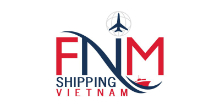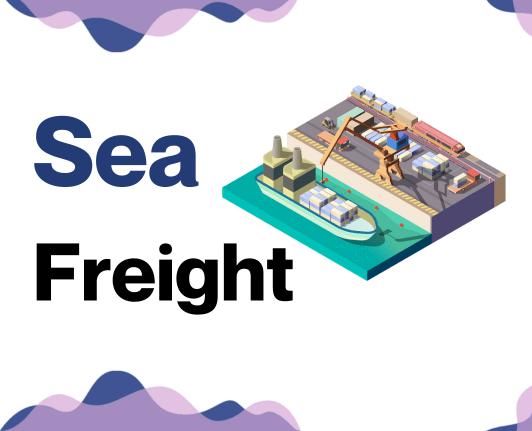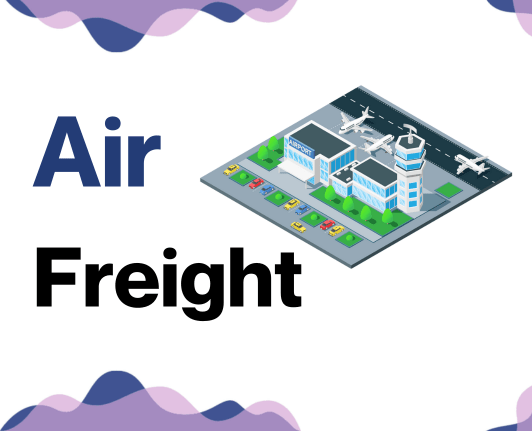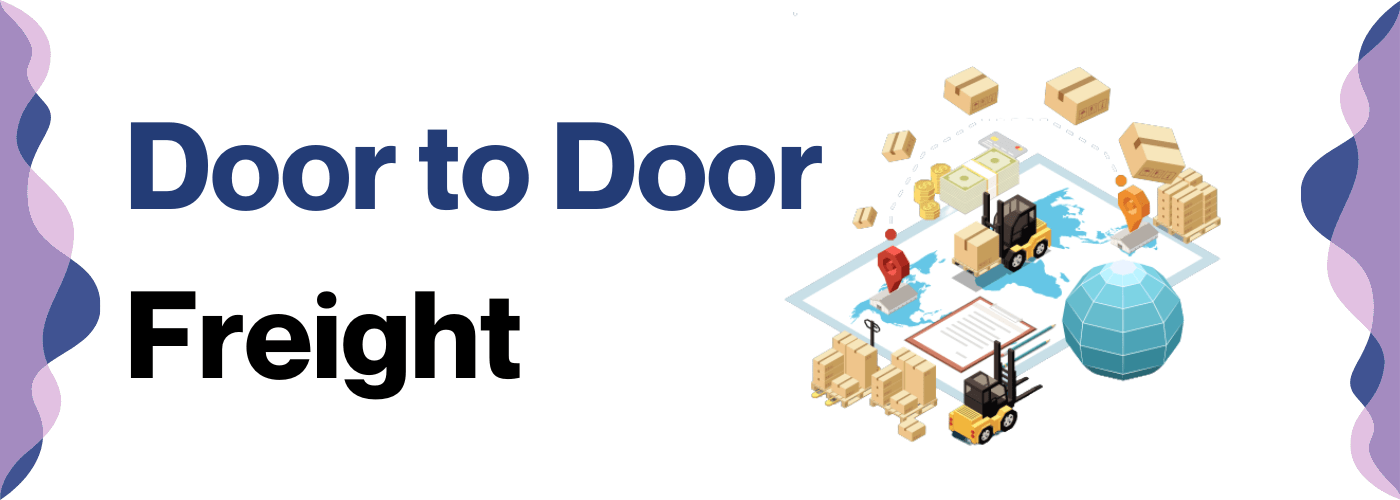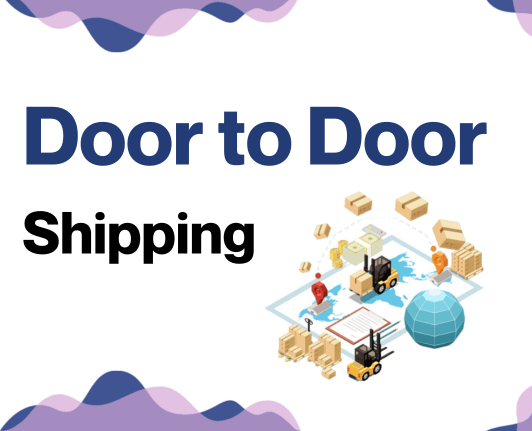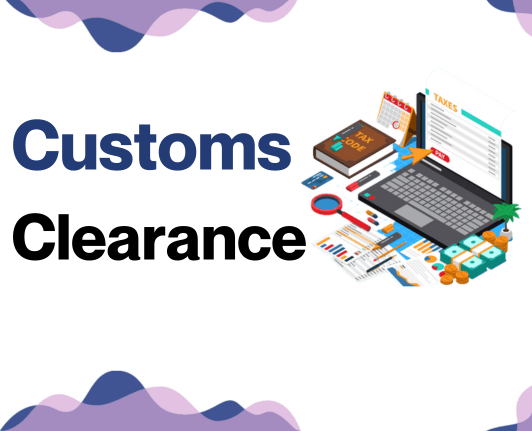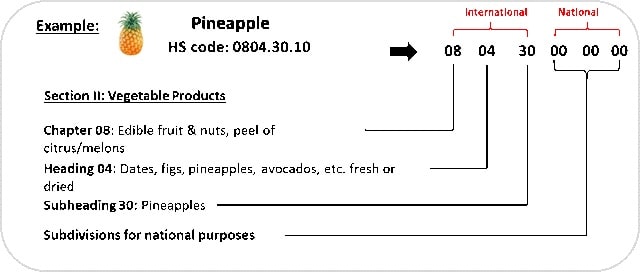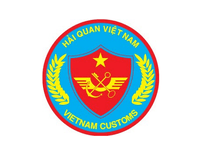Does 'shipping from Vietnam to UAE' make you feel like you’re trying to ride a bike while juggling chopsticks? We get it! Calculating rates, estimating transit times, interpreting customs regulations—it's enough to give even the most seasoned professional a headache. That's where this handy guide steps in. We’ll be diving into different types of freight options, drilling down into customs clearance, and delving into duties and taxes. Expect comprehensive, actionable advice tailored for businesses undertaking the transition from Vietnamese to UAE markets. If the process still feels overwhelming, let FNM Vietnam handle it for you! As an international freight forwarder, we're committed to turning shipping from an uphill battle into smooth sailing for your business.
Summary
Which are the different modes of transportation between Vietnam and UAE?
Choosing the right transportation method between Vietnam and UAE is akin to selecting the perfect ingredients for a well-cooked meal; both affect the outcome significantly. Vietnam and UAE are distanced by land masses and oceans, making air and sea freight the practical choices. Each comes with its own set of advantages, from cost to speed. Consider your specific shipping needs, whether it's a bulky cargo or time-sensitive delivery. Remember, the right choice will harmonize with your business requirements like a well-cooked meal satiating your taste buds.
How can FNM Vietnam help?
Faced with shipping goods from Vietnam to UAE? FNM Vietnam has you covered. Our expert team seamlessly handles every stage - from transport to custom clearance. Your trouble-free shipping experience starts here. Need a free estimate? It's less than 24 hours away. Got any queries? Our consultants are just a call away.
FNM Vietnam Tip: Sea freight might be the best solution for you if:
- You're moving big loads or large items. Sea freight offers roomy, cost-effective solutions.
- Your shipment isn't time-critical. Ocean routes take longer but are often more reliable.
- Your supply chain links major ports, tapping into a broad network of sea lanes.
Sea freight between Vietnam and UAE
Sea transportation between Vietnam and the UAE is a crucial artery in the body of global trade, pulsating with raw commodities, manufactured goods, and more. Anchored by Vietnam's bustling ports like Ho Chi Minh City, and UAE's titanic ports like Jebel Ali, these trade veins serve as lifeblood to each nation's industries. And while ocean freight might jog compared to its sprinting counterparts, air or express courier, it compensates as the marathon player by being a cost-effective choice for high-volume cargoes.
Now, imagine this route as a challenging game of chess. Many businesses, like rookies, plunge into shipping errors, underestimating the rules and complexities. The correct maneuvers may seem like a cryptic code, but knowing best practices and standard specifications will transform you from a novice to a master. In this guide, we'll unveil these strategies and ensure your business hits that checkmate every time.
Main shipping ports in Vietnam
Port of Hai Phong
Location and Volume: Located in the Northern City of Hai Phong, this port is crucial for the region's economic development, currently managing a shipping volume of roughly 6 million metric tons annually.
Key Trading Partners and Strategic Importance: The Port of Hai Phong's principal trading partners include Japan, China, South Korea, and the USA. Besides, the strategic location of this port makes it an essential export gateway for Northern Vietnam.
Context for Businesses: If your business is keen on reaching out to markets in North Asia and the United States, the Hai Phong Port’s extensive network and capacities could serve your interests.
Port of Ho Chi Minh City
Location and Volume: Situated in Southern Vietnam, this port has an integral role in the country's trade, handling a shipping volume of nearly 8 million TEUs annually.
Key Trading Partners and Strategic Importance: The Port of Ho Chi Minh’s primary trading partners are China, the United States, and Japan. This port, as the busiest in the country, is a critical commercial hub for Vietnam.
Context for Businesses: Considering its abundant trade links and congestion-free dockage facilities, the Port of Ho Chi Minh City could be a sound choice if you aim to expand your reach to North American and East Asian markets.
Port of Da Nang
Location and Volume: Located in the coastal city of Da Nang, this port is a significant part of Central Vietnam's local economy and manages approximately 4 million metric tons of cargo every year.
Key Trading Partners and Strategic Importance: Key trading partners of the Port of Da Nang include China, Thailand, and the United States, playing a strategic role in promoting commerce in the region.
Context for Businesses: If you are looking to tap into markets in China, Thailand, or the United States, this port's direct shipping network offers a unique advantage.
Port of Quy Nhon
Location and Volume: This port, found in the city of Qui Nhon, contributes significantly to Vietnam's bulk and container shipping, carrying around 4 million metric tons annually.
Key Trading Partners and Strategic Importance: Its key trading partners are the United States, Japan, and China. Positioned centrally, the Port of Quy Nhon acts as an essential maritime gateway.
Context for Businesses: If your strategy involves a robust supply line for moving bulk commodities or wide-ranging goods to and from the U.S., Japan, and China, the Port of Quy Nhon may be useful for your planning purposes.
Port of Vung Tau
Location and Volume: Situated in the city of Vung Tau, this port plays a significant role in accommodating overloaded ports of Ho Chi Minh City, dealing with about 7 million metric tons of freight annually.
Key Trading Partners and Strategic Importance: The major trading partners are the United States, Japan, and China. Its strategic importance lies in its role as a subsidiary port to reduce cargo traffic at the Port of Ho Chi Minh City.
Context for Businesses: If your intent is to reduce logistics bottlenecks by exploring alternative shipping routes, the Port of Vung Tau might align well with your strategic operations.
Port of Cai Mep
Location and Volume: Located near the Vung Tau City, the port is one of Vietnam's rapidly growing ports, catering to a shipping volume of close to 14 million metric tons per year.
Key Trading Partners and Strategic Importance: China, the United States, and Japan are the key trading partners. Its deep-water terminal and proximity to the international maritime route increase its strategic importance.
Context for Businesses: If your business is focused on increasing large-scale shipments to and from china, the U.S., or Japan, leveraging the Cai Mep Port's facilities could streamline your operations.
Main shipping ports in UAE
Port of Jebel Ali
Location and Volume: Located in Dubai, the Port of Jebel Ali is a crucial hub for Middle Eastern trade, managing a shipping volume of nearly 13.5 million TEU.
Key Trading Partners and Strategic Importance: Key trading partners include India, China, and the USA. The Port of Jebel Ali boasts one of the largest container terminals and is positioned as a key cargo point for East-West trade.
Context for Businesses: If you're planning on tapping into the Middle Eastern or South Asian markets, the Port of Jebel Ali, recognized for its efficiency and state-of-the-art facilities, will be a significant player in your logistics plan.
Port of Khalifa
Location and Volume: Situated in Abu Dhabi, the Port of Khalifa is pivotal for trade, with a shipping volume exceeding 1.5 million TEU.
Key Trading Partners and Strategic Importance: The Port of Khalifa has current and future trading relations with countries like India and China and serves as the gateway to the KIZAD industrial zone, one of the world’s largest.
Context for Businesses: If you're looking to have a foothold in the Middle East, the Port of Khalifa, with its global connectivity and vast hinterland, plays a vital role.
Port of Sharjah
Location and Volume: Found in Sharjah, this port plays a significant role in regional trade, handling a shipping volume of approximately 500,000 TEU.
Key Trading Partners and Strategic Importance: Its major trading partners include Iran, India, and Kuwait. The Port of Sharjah is known for its versatility, handling a variety of cargo.
Context for Businesses: If your strategy involves diverse cargo types, the Port of Sharjah's expertise in handling bulk, break-bulk, and containerized cargo could be vital for your operations.
Port of Fujairah
Location and Volume: Nestled in Fujairah, this port is essential for global oil trade and has a considerable shipping volume.
Key Trading Partners and Strategic Importance: Predominantly serving oil tankers and bulk carriers, the port regularly engages with oil-exporting nations like Saudi Arabia and Iran.
Context for Businesses: If you operate in the petroleum industry, the Port of Fujairah, one of the world's largest bunkering hubs, would be integral to your logistics.
Port Rashid
Location and Volume: Located in Dubai, Port Rashid is core to regional luxury trade, particularly for cruise liners.
Key Trading Partners and Strategic Importance: Port Rashid is one of the region's primary hubs for the luxury ship industry.
Context for Businesses: If your supply chain involves luxury goods or the leisure industry, Port Rashid's premier cruise terminal may be part of your strategic logistics planning.
Mina Zayed
Location and Volume: Positioned in Abu Dhabi, Mina Zayed, coping with diverse cargo, has an extensive shipping volume.
Key Trading Partners and Strategic Importance: Significant trading partners include the Gulf countries, India, and China. The port is notable for its facilities to handle temperature-controlled and cold storage goods.
Context for Businesses: If your strategy involves perishable goods, Mina Zayed, with its specialized handling of reefer containers, could be crucial to your success.
Should I choose FCL or LCL when shipping between Vietnam and UAE?
Making the voyage from Vietnam to UAE with your goods? Then you ought to understand your sea freight options: Full Container Load (FCL) and Less than Container Load (LCL), also known as consolidation. Your choice here will directly sway your shipping costs, delivery timeline, and overall shipment success. We invite you on this voyage of discovery to unravel these two shipping strategies, as we equip you with the knowledge to select the most suitable option tailored to your specific shipping situation.
LCL: Less than Container Load
Definition: LCL (Less than Container Load) refers to shipping a smaller volume of freight that doesn't require the full capacity of a standard sea freight container. Your cargo shares space with other shippers' goods, hence the term 'consolidation'.
When to Use: LCL is perfect for low volume shipments, often a choice for businesses when their cargo is less than 13/14/15 CBM. It offers flexibility as you only pay for the space you're using.
Example: For instance, an auto-parts supplier in Vietnam doesn't have enough goods to fill up an entire container. Instead of waiting to accumulate enough goods to fill an FCL (Full Container Load), the supplier can opt for an LCL shipment, sharing container space with others and ensuring continuous product supply to their customers in the UAE.
Cost Implications: As you're sharing container space in an LCL shipment, you only pay for the space your cargo occupies. This often results in a more cost-effective solution for businesses with low volume freight. However, take into account the additional costs of handling and consolidation, which can fluctify depending on the lcl freight partner you choose. Thus, seeking an affordable lcl shipping quote for the entire journey becomes key.
FCL: Full Container Load
Definition: FCL, or Full Container Load, is a type of shipping service that provides exclusive rights to a whole container. The key advantage of FCL shipping is it ensures your goods are not combined with others, making it a secure option.
When to Use: FCL shipping is best-utilized when cargo size exceeds 13-15 CBM. It offers additional safety as your goods are sealed within an FCL container at origin and remain untouched until they reach their destination. For businesses handling sizable and high-value shipments, FCL becomes increasingly cost-effective.
Example: Consider an export firm in Vietnam shipping a large order of furniture to a client in UAE. If the goods fill up more than half a 20'ft container or 40'ft container, an FCL shipping quote would likely present the most affordable and secure choice.
Cost Implications: While the upfront cost of an FCL shipment can be higher, the per-unit cost decreases significantly with higher volumes, making FCL a cheaper option for substantial shipments. Plus, you also save on the potential extra handling costs associated with LCL (Less than Container Load), bringing substantial cost benefits. Thus, to streamline your transport and avoid potential risks, FCL shipping is an excellent option.
Say goodbye to shipping headaches!
Thinking about shipping from Vietnam to UAE? FNM Vietnam, your trusted freight forwarder, is here to make the process stress-free. Our ocean freight experts help you decide whether consolidation or a full container is your best option, considering factors like your cargo size, shipping cost, and delivery timeframe. Take the guesswork out of international shipping. Reach out to our team today for a hassle-free, no-obligation shipping estimate.
How long does sea freight take between Vietnam and UAE?
Shipping goods between Vietnam and UAE by sea freight typically takes around 20 to 30 days. However, this timeframe can vary based on a host of factors. The specific ports of departure and arrival, the weight of the goods, as well as their nature, can each play a role in determining the exact transit times. For a personalized and more accurate quote, a freight forwarder like FNM Vietnam can provide valuable insights.
Below you'll find a chart highlighting the average transit times between the main freight ports in both countries.
| Port in Vietnam | Port in UAE | Average Transit Time (Days) |
| Ho Chi Minh City | Jebel Ali | 17 |
| Haiphong | Abu Dhabi | 24-28 |
| Da Nang | Sharjah | 23-29 |
| Quy Nhon | Fujairah | 29 |
*Please note that these are only average times and actual transit can be less or more depending on various factors.
How much does it cost to ship a container between Vietnam and UAE?
Transporting goods between Vietnam and UAE can cost anywhere from $40 to $200 per cubic meter (CBM). Calculating precise ocean freight rates isn't straightforward, though. Factors like the point of loading and destination, your chosen carrier, nature of the goods, and monthly market fluctuations all influence the final shipping cost. That's where we step in—our shipping specialists meticulously analyze these factors to tailor the most efficient and cost-effective solution for each unique shipment. Rest assured, our quotes aren't one-size-fits-all. We're here to craft a shipping strategy suited to your specific needs.
Special transportation services
Out of Gauge (OOG) Container
Definition: An OOG container is specially designed for cargo that doesn't fit standard dimensions due to oversized length, width, or height.
Suitable for: It's suitable for out of gauge cargo such as heavy machinery, construction materials, industrial equipment, and other bulky items.
Examples: Wind turbine blades, heavy industry valves, large statues, and oversized vehicle parts.
Why it might be the best choice for you: If your goods exceed the dimensions of a typical shipping container and require special handling, an OOG container will provide the additional space necessary for safe transportation.
Break Bulk
Definition: Break bulk refers to items shipped individually or in batches, not in containers. These items are often loaded onto pallets, crates, or drums.
Suitable for: They're suitable for cargo that is too large or heavy to fit into a container and not suitable for bulk shipping.
Examples: Large manufacturing equipment, construction materials, bulk bags, or drums of liquid goods.
Why it might be the best choice for you: If your goods do not fit into standard containers and are not suited for bulk transport, break bulk is a feasible solution. It allows flexibility and can be cost-effective for larger quantities.
Dry Bulk
Definition: Dry bulk involves the transportation of large volumes of unpackaged goods. This shipping method involves loading loose cargo directly into the ship's hold.
Suitable for: It's perfect for goods like grains, coal, iron ore, or sugar that have uniform character and don't require separate, compartmented storage.
Examples: Wheat, corn, iron ore, coal, or sugar.
Why it might be the best choice for you: The loose cargo load system might work best for businesses dealing with large quantities of homogeneous goods as it can significantly reduce shipping costs.
Roll-on/Roll-off (Ro-Ro)
Definition: Ro-Ro vessels are designed with built-in ramps that allow vehicles to be driven on and off the boat, making it a convenient transport option for wheeled cargo.
Suitable for: It's most suitable for mobile machinery, automobiles, buses, trucks, trailers, or heavy equipment.
Examples: Cars, tractors, trailers, or motorhomes.
Why it might be the best choice for you: If your business involves shipping fully assembled automobiles or other mobile goods, ro-ro shipping offers a simple, cost-effective solution.
Reefer Containers
Definition: Reefer containers are temperature-controlled shipping containers typically used for the transportation of perishable cargo.
Suitable for: Great for goods such as fruits, vegetables, dairy products, or any product that requires a controlled temperature.
Examples: Seafood, dairy products, fresh fruit, and vegetables or pharmaceutical goods.
Why it might be the best choice for you: If your goods are sensitive to temperature and need to be kept chilled or frozen, using reefer containers will ensure your products arrive in optimal condition.
Unsure which freight shipping option suits your goods best? At FNM Vietnam, our team of experts is ready to help. Submit your details for a free shipping quote in less than 24 hours. Your international shipping needs are our #1 priority.
FNM Vietnam Tip: Air freight might be the best solution for you if:
- You're on a tight schedule. Air freight delivers speed unmatched by other modes.
- Your cargo is under 2 CBM, a good fit for air's smaller capacity.
- Your destination is off the usual routes, making air's global network a key asset.
Air freight between Vietnam and UAE
Air freight from Vietnam to the UAE - one might think of it as a high-speed courier that not only outpaces sea and land transport but also painstakingly ensures safety and reliability. Here's why: It's incredibly favourable for those petite, worth-a-small-fortune items - impressively intricate Vietnamese handicrafts or state-of-the-art electronics. However, just like a thrilling novel, air freight has plot twists that can be costly if overlooked.
When shippers gloss over the fine print of air freight, they stumble into pitfalls. They often underestimate their freight expenses, as they don't apply the right formula to ascertain the weight of their shipment. Picture this: It’s like guessing the weight of an elephant with just a mental image, inevitably landing into inaccurate results. Such missteps significantly deflate their profit margins, turning their high-speed advantage into an operational handicap. We dive deep into this issue and more, serving them the key to cost-effective and streamlined air shipping. Avoid falling into these common traps in the world of air freight – Let's unravel these complexities together.
Air Cargo vs Express Air Freight: How should I ship?
Unsure about what's better for your business - sticking your shipment in a busy airline aka air cargo, or getting a dedicated plane all to your stuff with express air freight? Turns out, it’s not just about speed when it comes to shipping between Vietnam and UAE. Let's decode the difference and help you make an intelligent decision that suits your specific shipping needs.
Should I choose Air Cargo between Vietnam and UAE?
Considering air cargo between Vietnam and UAE can be both cost-effective and reliable. Firms like Vietnam Airlines and Emirates SkyCargo, major players in this sector, tend to have fixed schedules, meaning transit times can be longer, yet predictable. Visit Vietnam Airlines and Emirates SkyCargo to learn more about their offerings. Importantly, as the weight of your cargo surpasses 100/150 kg (220/330 lbs), shipping by air becomes increasingly attractive. Choosing this form of transport may well align with your budget, providing a balanced blend of cost, reliability, and schedule consistency.
Should I choose Express Air Freight between Vietnam and UAE?
Express Air Freight, a service offered by globally trusted couriers like FedEx, UPS, or DHL, might be ideal for your business needs if you're shipping cargo under 1 CBM or 100/150 kg (220/330 lbs). These firms use dedicated cargo planes, translating to quicker delivery times and heightened security, perfect for high-value or time-sensitive shipments. The option of door-to-door service often simplifies the process, relieving you of worries related to consignment handling. Choosing this option can ensure swift and secure shipment of your goods from Vietnam to the UAE.
Main international airports in Vietnam
Tan Son Nhat International Airport
Cargo Volume: Handling over 1.4 million tons as the busiest aerodrome in Vietnam.
Key Trading Partners: Mainly includes China, Korea, and USA.
Strategic Importance: Located in Ho Chi Minh City, the major economic centre of the country.
Notable Features: Accommodates wide-body aircraft and offers full-fledged cargo facilities
For Your Business: Its strategic location and volume of goods provide a concentration of forwarding and cargo handling agents - ideal for businesses seeking efficient shipping.
Noi Bai International Airport
Cargo Volume: Processes around 700,000 tons of cargo per year.
Key Trading Partners: Mostly involves Japan, Korea and USA.
Strategic Importance: As the biggest airport in northern Vietnam, it serves as a crucial link to the region.
Notable Features: High-tech handling equipment for efficient cargo processing and short turnaround times.
For Your Business: With modern equipment and extensive connectivity, it offers businesses reliable transit times and easy connections to key Asian markets.
Da Nang International Airport
Cargo Volume: Handles around 100,000 tons of freight annually.
Key Trading Partners: Mainly Japan, Thailand and Cambodia.
Strategic Importance: Located centrally, it forms a critical supplement between Tan Son Nhat and Noi Bai airport services.
Notable Features: Expanding cargo terminal to cater the rise in cargo traffic.
For Your Business: Ideal for businesses seeking to reach both northern and southern markets, thanks to its central location.
Cam Ranh International Airport
Cargo Volume: Processes over 30,000 tons of cargo per year.
Key Trading Partners: Major trading partners include Japan, Korea and China.
Strategic Importance: It's a major showpiece airport for visitors to the resort city of Nha Trang.
Notable Features: The airport features modern cargo facilities, with plans for expansion.
For Your Business: Exposure to tourists may provide unique marketing opportunities for appropriate businesses, alongside usual freight handling services.
Cat Bi International Airport
Cargo Volume: Facilitates round-about 20,000 tons of cargo annually.
Key Trading Partners: Key trading partners are China, USA and Russia.
Strategic Importance: This port city airport is an important logistics engine in northern Vietnam.
Notable Features: The airport accommodates a wide range of commercial flights.
For Your Business: Its location in Hai Phong City's port area could be an advantage if you're integrating sea and air freight.
Main international airports in UAE
Abu Dhabi International Airport
Cargo Volume: With a capacity of over 1 million tonnes annually, this terminal is crucial for handling both import and export goods.
Key Trading Partners: Major trading partners include the UK, China, India, Australia, and the USA.
Strategic Importance: Ideally located between East and West, Abu Dhabi International Airport is a significant global hub and a key gateway to the Middle East.
Notable Features: This airport prides itself on its advanced infrastructure, specialized cargo handling services, and excellent connectivity with over 60 airlines operating.
For Your Business: If your business is dealing with shipments to or from the Middle East, leveraging the advanced facilities and strategic location of Abu Dhabi International Airport could streamline your logistics and cut down transit times.
Dubai International Airport
Cargo Volume: Handling over 2.6 million tonnes of cargo annually, it's one of the world's busiest airports for international cargo traffic.
Key Trading Partners: Mainly trading with Asia, Europe, and the Americas, with key partners including China, India, USA, and Germany.
Strategic Importance: Situated in a pivotal location for international trade, Dubai International Airport is an indispensable link in the global supply chain.
Notable Features: Home to one of the largest and most modern cargo terminals in the world, Emirates SkyCargo, offering a range of cargo handling services.
For Your Business: Its state-of-the-art cargo infrastructure and strategic location can provide your business with fast, reliable, and efficient shipping routes, making it an ideal choice for high volume international trade.
Sharjah International Airport
Cargo Volume: One of the major cargo handling airports in the region, handling approximately 400,000 tonnes annually.
Key Trading Partners: Strong links with the EU, Africa, and Asia, especially China, India, and Saudi Arabia.
Strategic Importance: Known as the first gateway to UAE exports, it's a significant center for import and transshipments in the region.
Notable Features: Home to Sharjah Aviation Services, a joint venture ground handling company, renowned for its fast, professional, and versatile services.
For Your Business: With its strategic location for export business and exemplary cargo handling capabilities, your goods could reach multiple continents quicker and more efficiently.
Al Maktoum International at Dubai World Central
Cargo Volume: Designed to handle 16 million tonnes of cargo annually, it's among the largest freight hubs in the world.
Key Trading Partners: Key partners include Asian and European countries, particularly China, Germany, and the UK.
Strategic Importance: Built as part of the future Dubai World Central, this airport is set to become the heart of Dubai's economy.
Notable Features: Home to the Logistics District for fast-cycle logistics and supply chain processes.
For Your Business: If you're looking for high capacity and swift operations, this airport is your future-proof solution to ensure your business keeps up with the growing speed of international trade.
Fujairah International Airport
Cargo Volume: Handles a freight volume of over 20,000 tonnes annually.
Key Trading Partners: Predominantly with Asia and the Middle East, in particular with India, Iran, and Saudi Arabia.
Strategic Importance: Perfectly placed outside the Strait of Hormuz, this airport offers a unique accessibility to the Gulf ports.
Notable Features: Provides a comprehensive range of logistic services like packaging, labelling, and cargo assembly.
For Your Business: If your business often deals with the Gulf, Iranian or Indian markets, availing of the unparalleled accessibility of Fujairah International Airport can aid in optimizing your shipping objectives and reduce delivery times.
How long does air freight take between Vietnam and UAE?
Generally, shipping between Vietnam and the UAE through air freight takes, on average, between 4 to 5 days. However, the transit time can be slightly influenced by factors such as the specific airports involved in the transport, the weight of the shipments, and the nature of the goods being transported. Remember, for the most accurate transit times that align with your specific shipping needs, it's always advisable to consult with a professional freight forwarder like FNM Vietnam.
How much does it cost to ship a parcel between Vietnam and UAE with air freight?
Estimating an average shipping rate per kg from Vietnam to the UAE, you might anticipate $3-$5. However, it's crucial to understand that exact rates aren't a simple calculation. Various factors affect the cost, like the proximities of departure & arrival airports, dimensions, weight, and nature of goods. Acknowledging these complexities, our team is ready to provide the best possible rates specific to your shipment, as we quote on a case-by-case basis. It's our pleasure to assist you with this intricate process! Contact us - we'll supply a free quote in less than 24h.
What is the difference between volumetric and gross weight?
The Gross Weight refers to the actual physical weight of your shipment, including all packaging. On the other hand, Volumetric Weight reflects the amount of space your shipment occupies in respect to its weight.
In Air cargo, calculate gross weight simply by placing your packaged shipment on a scale and reading the result. For volumetric weight, there is a formula: Length(cm) x Width(cm) x Height(cm) / 6000. This denominator figure might differ depending on the freight carrier.
In the case of Express Air Freight, the formula for volumetric stays the same, but the denominator changes to 5000.
For example, imagine you have a package that weighs 8kg and has dimensions of 50cm x 40cm x 30cm. For Air cargo, your volumetric weight would be 50 x 40 x 30 / 6000 = 10kg (or 22 lbs), while in Express Air Freight it would be 50 x 40 x 30 / 5000 = 12kg (or 26.5 lbs).
These calculations are crucial as freight charges are typically based on whichever is higher between gross and volumetric weight. Hence, knowing these values can help you forecast your shipment's transportation cost more accurately.
FNM Vietnam Tip: Door to Door might be the best solution for you if:
- You seek hassle-free shipping. Door-to-door manages the entire process for you.
- You like one go-to contact. A dedicated agent oversees your door-to-door shipment.
- You aim to limit cargo handling. Fewer transitions mean less risk of damage or loss.
Door to door between Vietnam and UAE
International door to door shipping - the full-service solution that frees you from the hassle of logistics. When shipping from Vietnam to UAE, it offers several advantages like seamless coordination and time-saving. Perfect for businesses prioritizing comfort over cost. So, are you ready to explore this beneficial approach? Let's dive in!
Overview – Door to Door
Easing your international shipping concerns, Door to Door shipping between Vietnam and UAE liberates you from the complexities of customs and logistics. This most-sought service from FNM Vietnam clients blissfully simplifies cross-border trade. Despite its higher cost, the peace of mind, ease of handling, and direct deliveries it provides are invaluable. However, if goods are time-sensitive or high-value, exploring other options might be prudent. Your challenges transform into efficient solutions with Door to Door shipping. So, put your logistics stress aside and let our expertise drive your success.
Why should I use a Door to Door service between Vietnam and UAE?
Ever tried juggling flaming torches while riding a unicycle on a tightrope? That’s what managing all aspects of international shipping can feel like. Here's why a Door to Door service could be your safety net:
1. Stress-Reducer: The beauty of Door to Door services is that they handle the complexities of freight forwarding, starting with goods pickup in Vietnam to delivery in the UAE. You can forget about the headache of logistics; it's their bread and butter.
2. Timely Delivery: Urgent shipments can't wait, and Door to Door services understand that. They pull all stops to ensure your freight gets to its destination in good time.
3. Specialized Handling: Got complex cargo? No worries! Door to Door services have the proficiency and equipment to manage even the most complex freight. Your goods are in good hands (or crates).
4. Absolute Convenience: With this service, you need not concern yourself with trucking to the final destination. Your freight will comfortably travel all the way from Vietnam's bustling streets or serene countryside to the impressive skyscrapers or sandy deserts of the UAE.
5. Complete Control: Lastly, Door to Door services provide transparency and control throughout the shipping process, allowing you to monitor and track your shipment at any point, ensuring peace of mind.
In conclusion, opting for Door to Door service between Vietnam and UAE is like hiring a personal bodyguard for your shipment, ensuring safe, timely, and stress-free delivery.
FNM Vietnam – Door to Door specialist between Vietnam and UAE
Opt for FNM Vietnam's seamless door-to-door shipping service from Vietnam to UAE. We're experts in the field, guaranteeing effortless transportation across various methods while taking care of packing, customs, and all the necessary paperwork for you. What's more? You get a dedicated Account Executive to ensure smooth sailing. Reach out now for a free estimate within 24 hours or for free consultation with our dedicated team. Let us make international shipping convenient for you.
Customs clearance in UAE for goods imported from Vietnam
Customs clearance—the vital process of sending and receiving goods between foreign territories—may seem daunting, especially due to risks like unforeseen charges and stalled shipments. Adding to the complexity, when importing goods from Vietnam to UAE, it's vital to grasp customs duties, taxes, quotas, and licenses to avoid unwelcome surprises such as goods getting stuck in customs. Fortunately, our deep dive into these key segments will equip you with the knowledge to navigate these waters confidently. Moreover, with FNM Vietnam's expert team ready to assist, feel assured knowing help is at hand. Reach out with key details including origin, value, and HS code of your goods for an accurate estimate. Proceed with ease and budget your project accurately. Let's step into the world of 'Customs clearance in UAE for goods imported from Vietnam.'
How to calculate duties & taxes when importing from Vietnam to UAE?
Cracking the code of duties and taxes during international shipping is practically an art form. Calculating customs duties for goods imported from Vietnam to the UAE requires knowledge about several critical elements. You need to consider the country of origin, the Harmonized System (HS) Code of the product being shipped, the declared customs value of the products, and the tariff rate that applies within UAE. Each step is essential in accurately estimating your anticipated costs.
The first critical piece of information is the country of origin. This generally refers to the country where the goods were manufactured or produced. For our discussion, it means identifying “Made in Vietnam” on your freight. This will set the groundwork for your subsequent calculations and help streamline your goods for seamless customs clearance. Let's continue this journey of unraveling the mystery of duties and taxes for your goods shipped from Vietnam to the UAE.
Step 1 - Identify the Country of Origin
Determining the country of origin is your first and arguably most crucial step when estimating duties and taxes. So, why such weight on this task?
Firstly, it plays into the Harmonized System code, which ultimately influences the import charges. Secondly, trade agreements between Vietnam and the UAE, like the ASEAN-GCC FTA, directly impact the ultimate tariff. Understanding these will help you predict duty costs more effectively. Thirdly, recognizing the origin allows you to navigate any country-specific import restrictions, keeping your business clear of roadblocks. Fourthly, it solidifies your documentation. All customs paperwork requires the country of origin, so knowing this offhand saves time. Lastly, it can identify possible preferential treatment for certain goods from Vietnam due to bilateral agreements with the UAE.
Remember, every product from oolong tea to textile machinery may have unique restrictions or tariff relief. So, take the time to understand these factors specific to your product. This will help streamline your shipping process and avoid unexpected costs. Trust us; this knowledge is worth its weight in imported gold!
Step 2 - Find the HS Code of your product
The Harmonized System (HS) Code, maintained by the World Customs Organization, is a standardized numerical code for trade goods. It is recognized and used by customs authorities worldwide to identify products for the application of tariffs and taxes.
You might be wondering, how do you find the HS code for your product? One simple way is to ask your supplier. They're generally familiar with the goods they're importing and the related regulations, so they're often able to provide you with the HS code.
However, if this isn't possible, we're here to walk you through an easy step-by-step process. Head over to the Harmonized Tariff Schedule. Simply type the name of your product in the search bar. In the returned results, check the Heading/Subheading column and you'll find your HS code.
Accuracy is key when selecting an HS code, as incorrect codes could cause detrimental delays and potential fines. For easier understanding, here's an infographic to illustrate how to read an HS code. Proper use of HS codes will ensure smooth customs clearance and prevent unnecessary costs.
Step 3 - Calculate the Customs Value
Ever wonder why the customs value differs from the product value when shipping from Vietnam to UAE? This discrepancy arises because the customs value is, in fact, the CIF (Cost, Insurance, and Freight) value.
Let's say you bought goods worth $1,000 (Cost) from Vietnam. Add the freight charge, say $200, and the insurance fee, let's assume $50. The total, $1,250, is the customs value misidentified as the product value.
This CIF value is pivotal as it's the base upon which the UAE calculates import duties. So, a clear understanding helps you prevent budget surprises! Remember, accurate estimations are essential in international shipping - slight nuances can make a big difference in your final cost.
Step 4 - Figure out the applicable Import Tariff
Import tariffs are defined as taxes imposed on imported goods, thereby altering the cost and demand for them. The type of tariff primarily used in the United Arab Emirates is the ad valorem tariff, which is a percentage of the product's value.
To identify the applicable tariff for your goods coming from Vietnam to the UAE, you'll start with the Harmonized System (HS) code for your product, established in the previous steps. Then, you'd look up this HS code in the Customs Tariff Table provided by the UAE Federal Customs Authority.
For instance, if you're importing plastic tableware and kitchenware from Vietnam, the HS code might be 3924.10.90. From the Customs Tariff Table, you find that the tariff rate for this category is 5%.
Suppose the Cost, Insurance, and Freight (CIF) value of your shipment is $10,000. The import duty would be calculated as 5% of $10,000, which equals $500. Therefore, the final cost including tariffs would be $10,500. This practical calculation could help you better understand and predict costs when considering importing goods from Vietnam to the UAE.
Step 5 - Consider other Import Duties and Taxes
When shipping goods from Vietnam to the UAE, you might come across additional duties beyond the standard tariff rates. These extra charges vary based on the product and its country of origin. For instance, an 'excise duty' may be imposed on certain goods like tobacco or luxury items. Likewise, 'anti-dumping taxes' could apply if imported goods are priced below fair market value, potentially hurting domestic industries.
Now, the most significant tax for you could likely be the VAT (Value Added Tax). In the UAE, the standard VAT is currently 5% (for the sake of example, actual rates may differ). Here's a simple formula to calculate the VAT amount: (Cost of Goods + Insurance + Freight + Customs Duty) VAT rate.
For example, say you are importing machinery valued at $10,000, insurance cost is $500, freight charges are $2000, and customs duty is $800; then the VAT will be: ($10,000 + $500 + $2000 + $800) 0.05 = $675. Remember, this is a hypothetical scenario, and actual prices and rates may vary.
In conclusion, beyond standard fees, it's crucial to account for potential extra import duties and taxes when planning your shipping budget. Always double-check the current rates and consult with a professional if needed.
Step 6 - Calculate the Customs Duties
In 'Step 6 - Calculate the Customs Duties', you'll learn the method to accurately compute customs duties for goods imported from Vietnam to UAE. The general formula is:
Customs Duty = Customs Value x Duty Rate
VAT = (Customs Value + Customs Duty) x VAT Rate
Anti-Dumping Duties = Customs Value x Anti-Dumping Rate
Excise Duty = Excise Duty Rate x (Customs Value + Customs Duty + VAT)
For instance, consider a shipment with a customs value of $10,000. If it's not VAT liable and the duty rate is 5%, your customs duty is $500.
Now, consider a shipment with VAT. With a VAT rate of 5%, the customs value plus duty equals $10,500, meaning the VAT liable is $525. So, your total sum becomes $11,025.
Lastly, consider a shipment also subject to an Anti-Dumping Tax of 10% and Excise Duty of 5%. The Anti-Dumping Duty is $1,000, hence the payables amount to $12,025. Then, the Excise Duty amounts to $601.25, making your total dues $12,626.25.
Remember, discrepancies in computations can be costly. This is where FNM Vietnam customs clearance services come in, ensuring that you only pay the rightful amounts. To avoid over-charging and simplify the process, trust us to handle your customs clearance, reachable 24/7, globally. Get a free quotation within 24 hours today.
Does FNM Vietnam charge customs fees?
Clearing the fog on fees, FNM Vietnam, your customs broker in Vietnam and UAE, handles customs clearance costs but doesn't tap into customs duties or taxes - those go straight to the government. Any charges you get will come backed with documents from the customs office, so you know you're only footing the bill that the government sets. Think of it like this: You're dining at a restaurant. FNM Vietnam is your waiter, ensuring your order (your goods) gets to the table (clears customs), while the government is the chef cooking it up (setting duties and taxes). No hidden costs, just transparent service.
Contact Details for Customs Authorities
Vietnam Customs
Official name: General Department of Vietnam Customs
Official website: http://www.customs.gov.vn/
UAE Customs
Official name: The General Administration of Customs
Official website: https://www.customs.gov.ae/en/
Required documents for customs clearance
Ready to make sense of the document jungle for customs clearance? We'll break down the Bill of Lading, Packing List, Certificate of Origin, and Documents of Conformity (CE standard) so you can ship with ease and confidence. No more paperwork headaches.
Bill of Lading
When shipping goods from Vietnam to UAE, your Bill of Lading (BOL) is a lifeline. It's the 'handshake' between all parties, documenting the details of the cargo, quantity, and destination, and marking the moment responsibility transfers. Have it ready at your fingertips - it simplifies claiming ownership once your goods dock in UAE. In our digital era, consider using an electronic or 'telex' BOL release. It dramatically speeds up the process, sparing you the headache of physical shipping. However, if air transport is your thing, the Airway Bill (AWB) will be your BOL equivalent, carrying the same authority. Always remember, whether BOL or AWB, keeping things safe, trackable, and quick is the shipping game's name.
Packing List
When shipping from Vietnam to UAE, you can't neglect your Packing List. It's not just a simple list—think of it as a comprehensive blueprint of your shipment. It includes crucial details like the type, quantity, and weight of your goods. This helps customs officers determine duties and detect irregularities. Let's say you're shipping 1000 handmade rattan baskets—each detail, right down to individual weights, must match up on your Packing List and the actual cargo. Failure in accuracy could lead to delays or even fines, regardless of whether you're sending your items via ocean or air freight. Being meticulous here goes a long way towards a smoother clearance process.
Commercial Invoice
Knowing the ins and outs of your Commercial Invoice is crucial when shipping goods from Vietnam to UAE. Think of it as your shipping journey's compass—it guides your product through customs and ensures a smooth transition. So, what should it include? Essential parts are a detailed description of the goods, total value, buyer and seller details, and Harmonized System (HS) codes.
Working out the HS codes correctly is key—these six-digit numbers classify your product and determine the customs duties applied. Incorrect coding could lead to fines or shipment delay—every exporter's worst nightmare! So, always double-check and align these details with other pertinent documents like the Bill of Lading or Packing List. Success lies in the details, so meticulousness is your vital ally for seamless shipping between Vietnam and UAE. And remember, failure to align these aspects might make your goods interminably stuck in a customs quagmire.
Certificate of Origin
Shipping goods from Vietnam to the UAE? Then get ready to focus on the Certificate of Origin (CO). This document is a must; customs won't clear your freight without it. The CO does more than just state where an item was made. It's also your golden ticket to possible savings, as goods from certain countries are eligible for preferential customs duty rates. Let's say you're exporting bamboo furniture manufactured in Vietnam. Presenting a Certificate of Origin clearly stating 'Made in Vietnam' might just lower your duty rates. Remember, every detail counts in international freight forwarding! So don't miss out on utilizing the Certificate of Origin to its fullest.
Get Started with FNM Vietnam
Navigating customs protocols between Vietnam and the UAE can be complex and time-consuming. Breeze through this process with FNM Vietnam's comprehensive solutions. Drawing on intricate knowledge and expertise, we manage every step of the customs clearance for you. Simplify your international shipping today. Reach out to us and get a free, no-obligation quote within 24 hours. Let's make your shipping experience seamless together!
Prohibited and Restricted items when importing into UAE
Ever been stumped by shipment restrictions importing into the UAE? It can be mind-boggling to figure out what's prohibited or restricted. But don't worry, this comprehensive guide is here to help, making sure your packages sail through customs without a hitch. Let's simplify this process together.
Restricted Products
- Telecommunication Equipment: You have to apply for a type approval certificate from the Telecommunications Regulatory Authority (TRA).
- Pharmaceutical Products: Before shipping, ensure you have a pre-market approval from the Ministry of Health and Prevention (MOHAP).
- Endangered Animals and Plants: If you're involved with wildlife trading, a CITES permit is required from the Ministry of Climate Change and Environment.
- Printed Goods and Media: You'll require a National Media Council approval for importing, printing, and publishing goods.
- Firearms and Ammo: An import license issued by the General Directorate of Abu Dhabi Police, as well as an End User Certificate, are mandatory.
- Plants, Seeds, and Soil: Make sure to obtain a plant import permit from the Ministry of Climate Change and Environment (MOCCAE).
Remember, it’s essential to ensure that all paperwork is accurate and complete prior to shipment to avoid any complications or delays.
Prohibited products
- Narcotic drugs and psychotropic substances
- Gambling tools and machineries
- Ivory, rhinoceros horn, and products of endangered animals
- Home-distilled alcoholic beverages and related equipment
- Pirate copies and counterfeit money
- Materials opposed to Islamic faith and decency
- Radioactive and nuclear substances
- Unstrung pearls, except for personal use
- Items that infringe upon intellectual property rights
- All kinds of wired and wireless transmitters
- Printed, visual, or other mediums containing pornographic content.
Are there any trade agreements between Vietnam and UAE
Yes, there are strong trade ties between Vietnam and the UAE but currently, no formal Free Trade Agreement or Economic Partnership Agreement exists between them. While these countries continuously look for opportunities to enhance trade relations, ensure you stay updated on tariffs, duties, and regulatory changes. Infrastructure projects, such as the expansion of UAE-linked port operations in Vietnam, signal promising future developments.
Vietnam - UAE trade and economic relationship
With a robust rapport rooted in history, Vietnam and the UAE share a flourishing trade and economic relationship. Over the years, both nations have expanded their partnership, marked notably by the signing of the Agreement on Economic, Cultural, Education, and Scientific Cooperation in 1997. Key sectors driving this progressed linkage include energy, shipping, agriculture, and textiles.
Notably, the UAE is the 7th largest investor in Vietnam, with direct foreign investment exceeding $3 billion by the end of 2020. Furthermore, trade volume crossed the $6.2 billion threshold in 2019, a 15% increase from 2018. The export palette ranges from computers, electronic products, and footwear from Vietnam, to oils, metals, and chemicals from the UAE.
Numerous opportunities are yet to be explored in the ever-increasing trade map between Vietnam and the UAE. Therefore, if your business is chartering in these hot industries, it's prime time to comfortably carve your niche in this partnership.
Your Next Step with FNM Vietnam
Overwhelmed by the complexities of shipping between Vietnam and UAE? Take the stress out of the equation by letting the FNM Vietnam team handle everything for you. From intricate customs procedures to choosing the ideal shipping method, we make the process seamless, efficient and hassle-free. Don’t slog through it alone, let us guide your cargo to its destination. Contact us now to start your effortless shipping experience!
Additional logistics services
Delve into our one-stop-shop offering. Beyond shipping and customs, discover how we take the reins of your whole supply chain, simplifying business with seamless, full-scale logistics solutions. Let's unlock smoother journeys for your goods, from origin to destination. Welcome to a hassle-free world of logistics!
Warehousing and storage
Finding the right warehousing solution in the Vietnam-UAE shipping route can be tricky. Especially when dealing with sensitive items that require temperature control. It's essential to prevent spoilage or damage during storage. Explore your choices over at our dedicated page: Warehousing.
Packaging and repackaging
Invest in the right packaging for seamless shipping from Vietnam to UAE. For delicate goods like ceramics or heavier items like machinery, a trusty partner is crucial. Picture this: Repackaging a delicate Vietnamese ceramic vase in sturdy, custom-fit packaging to withstand the journey, or a bulky machine perfectly encased, preventing damage. Explore ways to protect your products with our Packaging and Repackaging services, tailored to your unique needs. More info on our dedicated page: Freight packaging.
Cargo insurance
Picturing an unexpected scenario where your shipped goods suffer damages? The repercussions can be harsh on your pocket. Cargo Insurance steps in here - it's not like your everyday fire insurance. It actively helps prevent such monetary losses. Picture shipping a set of exquisite tableware. A single jostle can harm multiple units.The insurance covers such damages, providing peace of mind. More info on our dedicated page: Cargo Insurance.
Supplier Management (Sourcing)
Struggling to find trustworthy suppliers from across the globe? FNM Vietnam is your answer! We excel in helping businesses establish robust sourcing networks in Asia, East Europe, and more. Our complete procurement process services resolve language barriers and guide you, step-by-step. With us, easily explore new manufacturing horizons! For a deep dive into our approach, visit our Sourcing services.
Personal effects shipping
When moving your treasured possessions from Vietnam to the UAE, every item requires the utmost care and attention. Got a heavy, bulky antique or a fragile musical instrument? No stress – our professionals handle the tricky spot of moving personal effects seamlessly. Benefit from a worry-free experience, whether it's your grandma's pottery or an entire room's worth! Get the scoop on the details over at our dedicated page: Shipping Personal Belongings.
Quality Control
Quality control plays a crucial role in ensuring the integrity of your goods from Vietnam to the UAE. Picture this: your custom-made ceramic pots, ready for their journey, but a few are flawed and cracked. Imagine the cost and time lost in re-production! Quality inspections pre-shipment mitigate such risks, ensuring your unique ceramic treasures meet the standard every time. Discover how to protect your brand's reputation in the 'Quality Inspection' page .
Product compliance services
Ensuring your goods meet destination regulatory standards is a crucial aspect of global shipping. We've got you covered with our Product Compliance Services. We conduct thorough laboratory tests, certify each item, and validate that your products adhere to all required laws. This service removes ambiguities, potentially averting delays or legal issues. Imagine shipping electronics and having them held up at customs – we're here to prevent that.
FAQ | For 1st-time importers between Vietnam and UAE
What is the necessary paperwork during shipping between Vietnam and UAE?
During the shipping process from Vietnam to the UAE, there are a few important documents you need to arrange. Firstly, we will take care of the bill of lading for sea freight or the air way bill for air freight on your behalf. However, it is mandatory for you to provide us with the packing list and the commercial invoice. Additionally, depending on the nature of the goods you're shipping, other documents such as Material Safety Data Sheets (MSDS) or various certifications may be required. All these documents must be prepared beforehand to ensure a smooth shipping process and to avoid any potential delays.
Do I need a customs broker while importing in UAE?
Yes, it's highly advisable to engage a customs broker when importing goods into the UAE due to the intricate process and essential documents required. As FNM Vietnam, we handle most of the customs representation for your shipments. Our team interacts with the customs authority on your behalf, taking on the task of navigating the complex procedures and ensuring that all necessary details are correctly provided. This way, you can focus on managing your business, confident that your freight forwarding needs are in expert hands.
Can air freight be cheaper than sea freight between Vietnam and UAE?
At FNM Vietnam, we understand that every shipment is unique, with different factors such as route, weight, and volume playing into the cost. Generally, if your cargo is under 1.5 Cubic Meters or weighs less than 300 kg (660 lbs), air freight might be a cost-effective alternative. Our dedicated account executives are always on hand to help you discern the most competitive option for your specific needs. Remember that these are just guidelines, and the cost can vary depending on the specifics of your shipment. We prioritize providing you with the best solution for your freight needs.
Do I need to pay insurance while importing my goods to UAE?
As FNM Vietnam, we strongly recommend securing insurance when importing goods to the UAE. While not strictly obligatory, insurance provides a safeguard against any unforeseen incidents such as loss, damage, or theft that may occur during transit. Shipping processes, whether local or international, can be unpredictable, and protecting your goods with insurance can provide peace of mind. This ensures that even if an unfortunate event occurs, your investment won't be completely lost and you'll be adequately compensated. Keep in mind, the final decision is entirely up to you and specific to your financial strategy and tolerance for risk.
What is the cheapest way to ship to UAE from Vietnam?
Given the relatively close geographical distance between Vietnam and the UAE, Sea freight is generally the cheapest shipping method. We, at FNM Vietnam, can help schedule your shipment via sea route, ensuring safe and cost-effective transportation. However, do bear in mind that it might take longer than other methods. It's all about striking a balance between speed and cost.
EXW, FOB, or CIF?
Choosing between EXW, FOB, or CIF depends largely on your relationship with your supplier. It's important to remember that they may not be logistics professionals, so enlisting the assistance of an agency like us at FNM Vietnam for international freight and process at destination would be beneficial. Generally, suppliers sell under EXW (at their factory's door) or FOB (covering all local charges till the terminal of origin). Regardless, we can provide a door-to-door service, simplifying the logistics and ensuring a seamless shipment process from your supplier's location to your designated delivery address.
Goods have arrived at my port in UAE, how do I get them delivered to the final destination?
If your goods have landed at a UAE port and we're handling your cargo under CIF/CFR incoterms, a custom broker or freight forwarder is required to clear and deliver the goods from the terminal. Alternatively, our team can manage everything for you under the DAP incoterms. It's essential to confirm these details with your FNM Vietnam account executive.
Does your quotation include all cost?
Absolutely, at FNM Vietnam, our quotes are comprehensive and transparent. They include all costs except for destination duties and taxes. You won't encounter any hidden fees or unpleasant surprises. If you require an estimate of the duties and taxes, feel free to reach out to your dedicated account executive. We're all about ensuring a straightforward and hassle-free experience for you.
